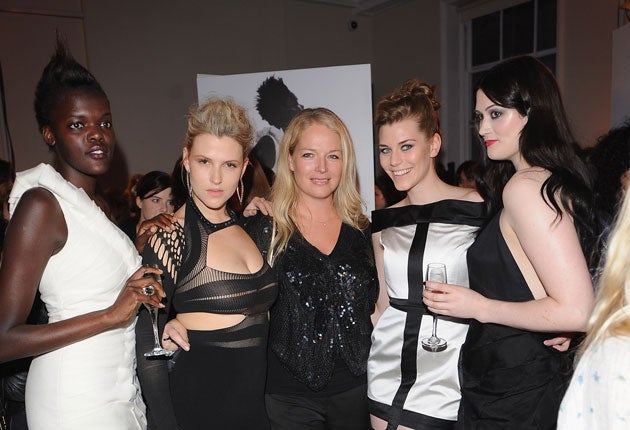'Models look like real women' shock
The growth of jobs for 'plus-size' females is a cause for optimism in the industry

Your support helps us to tell the story
From reproductive rights to climate change to Big Tech, The Independent is on the ground when the story is developing. Whether it's investigating the financials of Elon Musk's pro-Trump PAC or producing our latest documentary, 'The A Word', which shines a light on the American women fighting for reproductive rights, we know how important it is to parse out the facts from the messaging.
At such a critical moment in US history, we need reporters on the ground. Your donation allows us to keep sending journalists to speak to both sides of the story.
The Independent is trusted by Americans across the entire political spectrum. And unlike many other quality news outlets, we choose not to lock Americans out of our reporting and analysis with paywalls. We believe quality journalism should be available to everyone, paid for by those who can afford it.
Your support makes all the difference.They used to be fashion's black hole: models either too large for the catwalk or too thin for catalogues. But a new market has opened up for "normal-sized" models as designers, retailers and magazine editors demand women with curves.
After previous false dawns, fashion insiders are hailing a breakthrough for larger models, such as Crystal Renn and Hayley Morley, which is redefining what it means to be "plus sized". More size 12 models are regularly featuring in campaigns and articles in an industry infamous for celebrating skeletal frames. Vogue Paris even dedicated its February issue to Lara Stone, the Dutch model who has admitted she has "tits and an arse".
Mark Fast, the Canadian designer who caused a stir by sending three size 12 and 14 models down his catwalk last September, will underline the shift by using larger models again at his London Fashion Week show next month.
On the high street, Marks & Spencer is believed to be preparing a lingerie campaign featuring a curvier model after holding plus-size castings, while the online retailer Asos recently used a size 14/16 model in its advertising. Even Boden, previously the exception to the rule that mail-order companies target larger women, is thinking about using bigger models.
Caryn Franklin, a fashion commentator, said: "There is now a real ripple of interest around models that are different from the standard catwalk model, who is too thin." The change of heart will be highlighted at a debate hosted by Sarah Brown in Downing Street to coincide with London Fashion Week, called "Size me up", which will extend last autumn's All Walks Beyond the Catwalk initiative to encourage designers to tackle larger sizes.
"We want fashion to enhance women's self-esteem. I'm delighted that Mark is using larger girls because it means [his last show] wasn't a novelty to get everyone talking but a real commitment," Ms Franklin added.
Morley, 21, said Fast's show had sparked the curvy boom. "I think it showed how amazing curvy figures can look in high-end fashion." The model, who has a 34-inch bust, 29-inch waist and 41-inch hips, added: "I am very happy with my body, and I think that is portrayed in my pictures."
Agencies are signing up larger models and in some cases bolting on plus- sized divisions to tap into the new market. Renn, the face of Evans, is the star of Ford +, Ford Models plus-sized section. She stars in the special "plus-size" spring issue of V magazine, the US fashion tome.
Sarah Travers, head booker at Hughes Models, the UK's first plus-size agency, said: "The plus-size market used to begin at size 14, while the standard finished at 10. But there is now a lot more work for size 12 and up. We took on 20 more girls last year, which is a lot."
Sarah Watkinson, who runs Morley's agency 12+ UK, said: "Larger girls aren't a gimmick any more. We've seen a genuine, if subtle, change."
But Harriet Close, of Close Models, warned that the industry should not get carried away. "Let's hope it's not just a little bubble," she said.
Only last week, the organisers of Latin America's biggest fashion show raised the alarm over some "extremely thin" models at Sao Paulo Fashion Week. Paulo Borges, the event's creative director, added that these models were "often the most booked" and worked mainly in Europe and the US.
Join our commenting forum
Join thought-provoking conversations, follow other Independent readers and see their replies
Comments